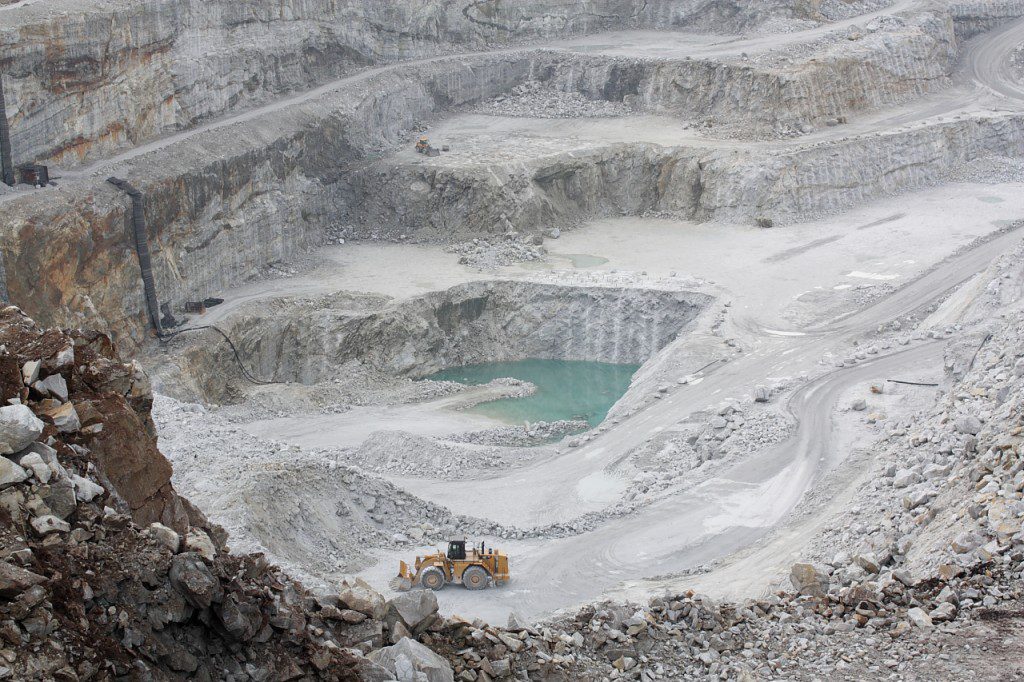This is a guest blog by Claire Malcolmson, the Responsible Aggregate consultant for Environmental Defence
Environmental Defence is committed to making positive, systemic change – and sometimes, working with former adversaries is the best path forward. Such is the case with the Cornerstone Standard for responsible aggregate (CSC) which is now under review. The other week, we were back at the table, meeting with representatives of aggregate companies, a Métis representative, experts in voluntary standards development, and more. By early April, we hope to share updates with you about how the Standard has been improved.

Before the review began, we did our homework. Environmental Defence wanted to know how people feel about the CSC, so that we could advocate for the most important and meaningful changes during its review. In early December, we hosted community workshops in Oro-Medonte and Acton to educate people about the Cornerstone Standard for responsible aggregate, and to gather feedback about what is and isn’t working. Below, I’ve outlined the concerns we heard, some thoughts on how the law and/or the CSC Standard deals with them, and our recommendations for improving the Standard based on the feedback we received at the workshops. But first, a note about our involvement in the CSC.
WHY ARE WE INVOLVED WITH THE CORNERSTONE STANDARD FOR RESPONSIBLE AGGREGATE?
There are some issues with Ontario’s aggregate laws, monitoring, and enforcement. Among other things, the province supports “close to market” extraction. There’s something to be said for sourcing locally, but there are also challenges with trying to find a suitable place for a gravel pit or quarry in Southern Ontario where the environment is already so severely degraded and communities are long established. In short, Ontario’s aggregate policies will lead to more fights between residents, environmentalists, and aggregate operators.
We fought a lot of these fights. We won some and we lost some. But we couldn’t fight them all. That’s why we decided to work with some industry leaders on a voluntary standard (like FSC lumber or MSC seafood) to address some of the environmental and community concerns related to aggregate pits and quarries, and to reward the companies that are acting more responsibly than the law requires. No one wants an aggregate operation in their backyard – but if one’s going to be there, it’s best that it adhere to a higher environmental and social standard. The Cornerstone Standard was developed and has now been tested by four CSC certified aggregate operations.
But as our community workshops reinforced, in order to get buy-in from community groups, the Standard needs to be improved. Many community groups are skeptical that the industry could ever be a good neighbor and steward of the environment. Fortunately, there’s good reason to believe that revisions that are currently being made to the CSC Standard will help to address some of this skepticism. There was agreement at the review panel that the Standard needs to be easier to read and audit, more prescriptive, and that CSC needs to communicate more clearly how CSC certified aggregate operations differ from the status quo.
SUMMARY OF PUBLIC CONCERNS, HOW THEY ARE ADDRESSED, AND ENVIRONMENTAL DEFENCE’S RECOMMENDATIONS
Trucking, traffic, noise, and air quality impacts of aggregate operations are people’s biggest sources of irritation. These are the unavoidable impacts of aggregate extraction. However, CSC addresses these by requiring that CSC certified operations create a public engagement committee prior to CSC certification (and for the life of the operation), where concerns are raised, tracked by the operator, and addressed where possible. “Standard Operating Procedures” for noise, water taking etc. are provided in the Standard, and CSC certified companies are asked to follow them or other best practices. We recommended that the “Standard Operating Procedures” be reviewed and improved, and that their use be prescribed where warranted.
Water pollution is naturally a big worry for residents near quarries in particular. Aggregate operators say they already need to prove their operation’s conformance to law for permits to take water, source water protection plans, and the placement of recycled aggregate piles. In addition to making sure that these permits are in good standing, Environmental Defence suggested that CSC develop a mandatory Standard Operating Procedure for water that includes a water quality test to prove that recycled aggregates aren’t polluting waterways – something that is not required by law.
Public consultation and engagement is a cornerstone of CSC. In contrast, Ontario’s laws for aggregate operations require very little when it comes to public engagement. Giving written notice to people within 120 meters of the site 45 days prior to the license application, providing a public information session, and posting notice in one issue of one local newspaper, is all that’s required by law. CSC requires operators to engage the public from the planning stages, right through to the closure of the site, through ongoing outreach, a community engagement plan, a public engagement committee that meets regularly, and transparently sharing of information and studies online. To make this strength of CSC even stronger, we recommended that operators reach out to people in a number of ways to come up with a list of “interested parties”, who would be notified of opportunities to learn more about the operation, and about any changes that would affect local people.
Site rehabilitation, or lack thereof, may be largely a legacy problem of sites approved long ago, but it is something people want more assurance about. Currently, all Ontario aggregate site plans require remediation, which is monitored through a provincial compliance assessment report (CAR). If an operator does not remediate the site, the Ministry of Natural Resources and Forestry will not surrender their license, and thus the operator will continue to pay for the license, and taxes related to leaving soil disturbed. Conversely, taxes are reduced when remediation begins, so smart operators begin remediation on part of the site as soon as possible (called progressive rehabilitation). Environmental Defence suggested that CSC develop an appropriate consequence for not completing site rehabilitation, and that CSC require the use of native species in remediation.
Audits and monitoring should provide assurance that a CSC certified operation is following required best practices. The province monitors aggregate sites approximately every five years, whereas CSC audits are required every three years. Environmental Defence recommended that CSC develop a short list of things that underpin the CSC difference, and monitor those yearly.
This is not an easy issue. There’s a real tension between the needs of communities, the need to protect the environment, and our need for aggregates. In fact, Ontario’s consumption of aggregates is projected to be 13% higher in the next 20 years than over the past 20 years. So what are we going to do? We are going to work hard to improve the reach and quality of CSC, in order to reduce the impacts of aggregate operations on people, communities, and the environment.
 Claire Malcolmson is a seasoned campaigner who cut her teeth on an Environmental Defence partnership that championed the Lake Simcoe Protection Act. Claire also led campaigns for the Great Lakes Protection Act, and for changes to campaign contribution rules for municipal election candidates under “Campaign Fairness”. She lives in Innisfil, Lake Simcoe, with her husband and wee boys.
Claire Malcolmson is a seasoned campaigner who cut her teeth on an Environmental Defence partnership that championed the Lake Simcoe Protection Act. Claire also led campaigns for the Great Lakes Protection Act, and for changes to campaign contribution rules for municipal election candidates under “Campaign Fairness”. She lives in Innisfil, Lake Simcoe, with her husband and wee boys.







